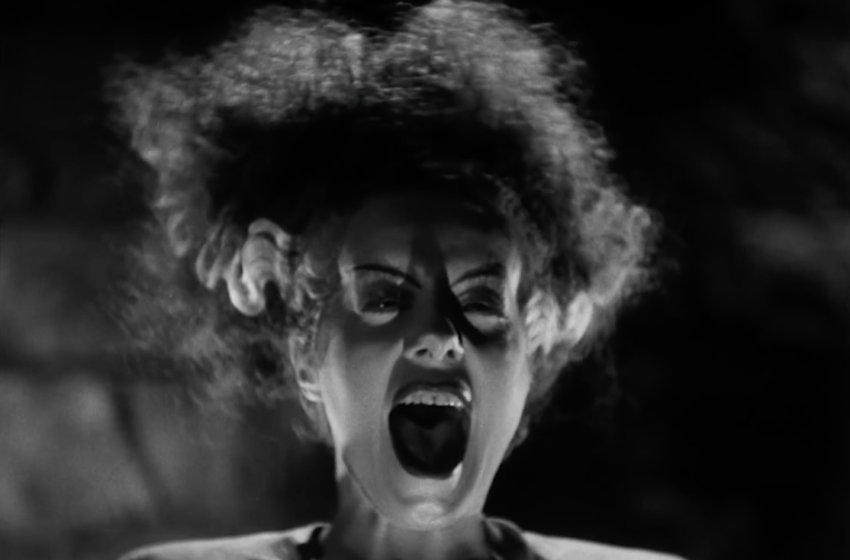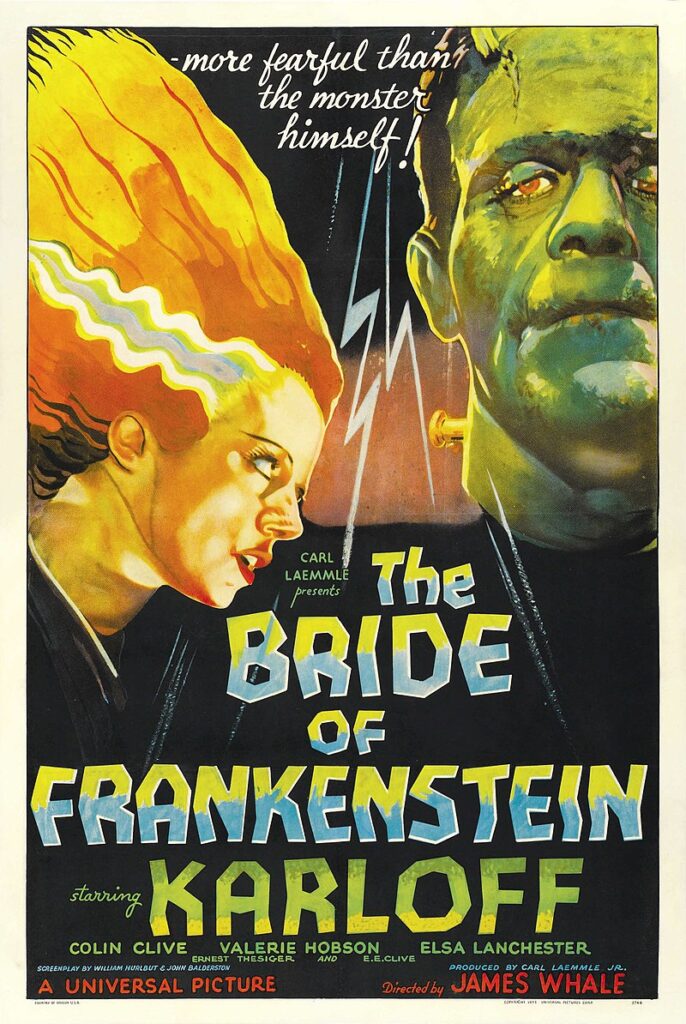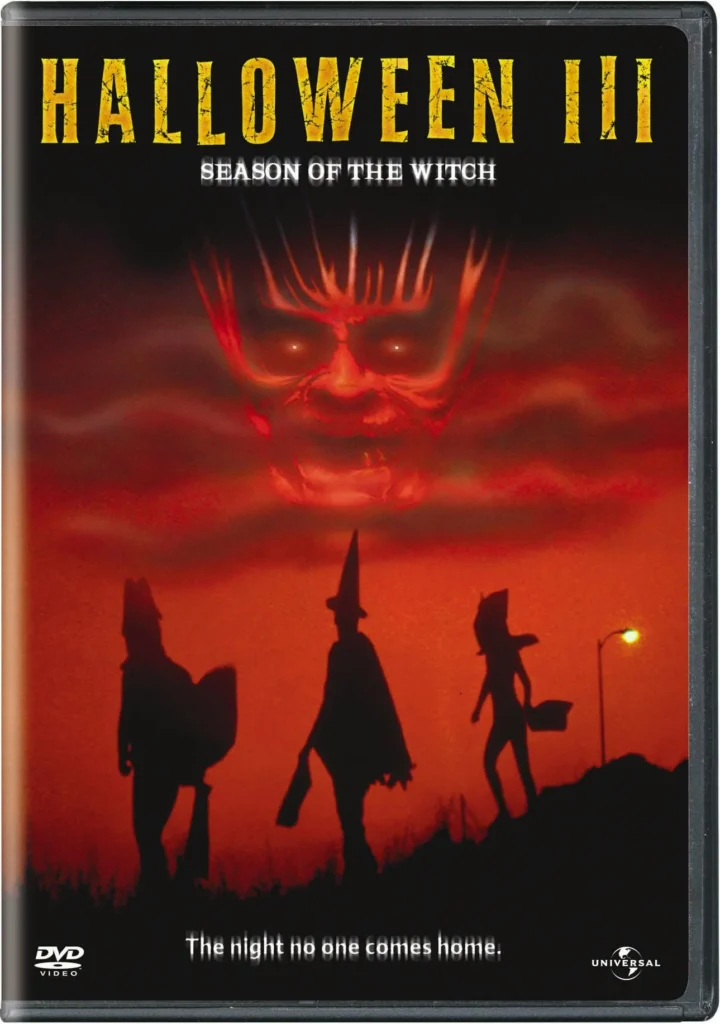
“The Bride of Frankenstein” (1935): A Masterful Sequel Beyond Its Time – Review

Introduction to a Gothic Classic
Released in 1935, “The Bride of Frankenstein” is widely regarded as one of the greatest horror films ever made. Directed by James Whale and starring Boris Karloff as the Monster and Elsa Lanchester in the dual roles of Mary Shelley and the titular Bride, this film is a direct sequel to the 1931 classic “Frankenstein.” Building on the success of its predecessor, “The Bride of Frankenstein” expands the narrative and deepens the themes, creating a richer and more complex cinematic experience. The film’s blend of horror, pathos, and dark humor, combined with its groundbreaking special effects and iconic performances, has secured its place in the pantheon of cinematic masterpieces.
Thematic Exploration
“The Bride of Frankenstein” delves into themes of creation, isolation, and the search for companionship, exploring the complexities of human and non-human existence.
- Creation and Hubris: The film continues to explore the theme of creation and the hubris of playing God. Dr. Frankenstein, driven by his desire to transcend natural limits, faces the moral and ethical consequences of his actions. This theme is embodied in the creation of the Bride, who is intended to be a companion for the Monster but ultimately represents the tragic consequences of defying nature.
- Isolation and Loneliness: The Monster’s journey is marked by profound loneliness and a desperate search for companionship. His longing for connection and the pain of rejection highlight the fundamental human need for acceptance and understanding. The Monster’s interactions with various characters, including the blind hermit, underscore his tragic quest for belonging.
- The Quest for Companionship: The creation of the Bride is driven by the Monster’s desire for a mate, reflecting the universal longing for companionship. However, the Bride’s immediate rejection of the Monster adds another layer of tragedy, emphasizing the complexity of human relationships and the often unattainable nature of true connection.
Character Dynamics and Performances
The film’s success is anchored by its memorable characters and the outstanding performances of the cast.
- Boris Karloff as the Monster: Karloff’s portrayal of the Monster in “The Bride of Frankenstein” is both powerful and nuanced. He brings a deep sense of pathos to the character, portraying the Monster’s suffering and yearning for acceptance with a poignant vulnerability. Karloff’s performance elevates the Monster from a figure of horror to a deeply sympathetic character.
- Colin Clive as Dr. Henry Frankenstein: Clive reprises his role as Dr. Frankenstein, capturing the character’s complex mix of ambition, guilt, and desperation. His portrayal conveys the internal conflict of a man torn between his scientific pursuits and the moral ramifications of his experiments.
- Ernest Thesiger as Dr. Pretorius: Thesiger’s Dr. Pretorius is a standout character, embodying the darker aspects of scientific ambition. His sinister charm and unorthodox methods contrast sharply with Dr. Frankenstein’s more reluctant participation in the creation of life, adding an element of malevolent manipulation to the narrative.
- Elsa Lanchester as the Bride and Mary Shelley: Lanchester’s dual roles are both iconic and impactful. As Mary Shelley, she frames the narrative, reminding viewers of the story’s literary origins. Her portrayal of the Bride, though brief, is unforgettable, capturing the character’s tragic beauty and fear in her first moments of life.
Visual and Cinematic Innovation
James Whale’s direction and the film’s visual style contribute significantly to its lasting impact and artistic merit.
- Expressionist Influences: The film’s visual style is heavily influenced by German Expressionism, characterized by stark lighting, dramatic shadows, and angular set designs. This aesthetic enhances the gothic atmosphere and underscores the film’s themes of horror and isolation.
- Groundbreaking Special Effects: “The Bride of Frankenstein” features pioneering special effects that were groundbreaking for their time. The creation scene, with its electrical apparatus and dramatic lighting, is a highlight, showcasing the innovative techniques used to bring the story to life.
- Set Design and Art Direction: The elaborate set designs, from the gothic laboratory to the hermit’s rustic cabin, create a richly textured world that immerses the audience in the film’s universe. The attention to detail in the art direction enhances the film’s visual storytelling, making each location feel both real and fantastical.
- Makeup and Costume Design: The iconic makeup design for the Monster, created by Jack Pierce, remains one of the most recognizable in cinema history. The Bride’s distinctive look, with her electrified hair and haunting beauty, has also become a cultural touchstone, symbolizing both creation and destruction.
The Narrative’s Duality
“The Bride of Frankenstein” presents a narrative that balances horror with moments of dark humor and poignant tragedy, creating a multifaceted storytelling experience.
- Horror and Tragedy: The film does not shy away from the horrific aspects of its story, portraying the Monster’s violent outbursts and the macabre experiments of Dr. Pretorius. However, these elements are interwoven with moments of deep tragedy, particularly in the Monster’s interactions with others and his ultimate rejection by the Bride.
- Dark Humor: James Whale infuses the film with elements of dark humor, providing a counterbalance to the more intense scenes. Characters like Dr. Pretorius deliver lines with a sardonic wit, and moments of absurdity, such as the miniature people created by Pretorius, add a surreal and humorous touch to the film.
- Emotional Depth: At its core, “The Bride of Frankenstein” is a deeply emotional story about the search for connection and the pain of rejection. The film’s ability to evoke empathy for the Monster and convey the complexities of human emotion is a testament to its narrative depth and the strength of its performances.
Cultural Impact and Legacy
“The Bride of Frankenstein” has left an indelible mark on both the horror genre and popular culture, influencing countless films and becoming a touchstone in cinematic history.
- Influence on Horror Cinema: The film has influenced numerous directors and filmmakers within the horror genre, inspiring a generation of storytellers to explore themes of creation, isolation, and the consequences of playing God. Its visual style and narrative techniques have been emulated and referenced in countless horror films.
- Cultural Iconography: The characters of the Monster and the Bride have become cultural icons, recognized and referenced across various forms of media. Their images are instantly identifiable, and their story continues to resonate with audiences.
- Academic Study: “The Bride of Frankenstein” is frequently studied in academic settings for its thematic richness and cinematic innovation. Scholars analyze its exploration of gender, creation myths, and the ethics of scientific experimentation, as well as its contribution to the evolution of the horror genre.
- Enduring Popularity: The film’s enduring popularity is evident in its continued relevance and the affection with which it is regarded by fans. It is regularly screened at film festivals and retrospectives, and its influence can be seen in modern interpretations and adaptations of the Frankenstein story.
James Whale’s Vision
James Whale’s direction is a significant factor in the film’s success and lasting impact. His vision and execution bring a unique blend of artistry and storytelling to “The Bride of Frankenstein.”
- Directorial Style: Whale’s directorial style is marked by its fluidity and attention to detail. He masterfully balances the film’s various tonal elements, creating a seamless blend of horror, humor, and pathos. His use of camera movement and framing enhances the emotional and dramatic impact of each scene.
- Innovative Techniques: Whale’s innovative use of special effects and set design set a new standard for horror films. His ability to create a cohesive and immersive world through visual storytelling is one of the film’s defining features.
- Character Focus: Whale’s focus on character development and interaction adds depth to the narrative. He ensures that each character, from the central figures to the supporting roles, is fully realized and integral to the story. This attention to character detail enriches the film and engages the audience on multiple levels.
Elsa Lanchester’s Dual Roles
Elsa Lanchester’s performances as both Mary Shelley and the Bride are pivotal to the film’s narrative and thematic structure.
- Mary Shelley as the Narrator: Lanchester’s portrayal of Mary Shelley serves as a narrative frame for the film, grounding the story in its literary origins. Her presence at the beginning and end of the film reminds the audience of the source material and the themes of creation and storytelling.
- The Bride’s Impact: Although her screen time is limited, Lanchester’s portrayal of the Bride is one of the most memorable aspects of the film. Her appearance is a dramatic and emotional climax, encapsulating the themes of creation, rejection, and the search for identity. The Bride’s immediate rejection of the Monster adds a poignant layer of tragedy to the story.
- Symbolism and Duality: Lanchester’s dual roles symbolize the duality present throughout the film. As Mary Shelley, she represents the creator and storyteller, while as the Bride, she embodies the created and the rejected. This duality enhances the film’s exploration of creation and the consequences of playing God.
The Bride’s Creation Scene
The creation scene of the Bride is one of the most iconic and memorable sequences in the film, showcasing both technical prowess and thematic depth.
- Technical Achievement: The scene is a testament to the film’s groundbreaking special effects and set design. The elaborate laboratory, with its towering electrical apparatus and dramatic lighting, creates a sense of awe and anticipation. The use of practical effects and innovative techniques brings the creation process to life in a visually stunning manner.
- Dramatic Tension: The scene is imbued with dramatic tension, as the audience witnesses the culmination of Dr. Frankenstein and Dr. Pretorius’s efforts. The interplay of light and shadow, combined with the orchestral score, heightens the sense of urgency and impending revelation.
- Thematic Resonance: The creation of the Bride encapsulates the film’s themes of creation and the consequences of defying nature. Her first moments of life, marked by confusion and fear, reflect the inherent tragedy of her existence. The Monster’s hopeful anticipation and subsequent rejection by the Bride underscore the film’s exploration of loneliness and the search for companionship.
Music and Sound Design
The music and sound design in “The Bride of Frankenstein” play a crucial role in establishing the film’s atmosphere and emotional tone.
- Franz Waxman’s Score: The score, composed by Franz Waxman, is a masterful blend of orchestral music that enhances the film’s dramatic and emotional impact. Waxman’s use of leitmotifs and thematic development underscores the narrative and adds depth to the characters’ experiences.
- Use of Silence and Sound Effects: Whale’s strategic use of silence and sound effects creates a powerful auditory experience. Moments of silence heighten tension, while sound effects, such as the crackling of electricity and the Monster’s growls, add to the film’s immersive quality.
- Integration with Visuals: The integration of music and sound with the film’s visual elements creates a cohesive and engaging experience. The orchestral score complements the dramatic visuals, and the sound design enhances the atmosphere of each scene.
Legacy and Influence
“The Bride of Frankenstein” has had a profound influence on the horror genre and cinema as a whole, shaping the portrayal of monsters and the exploration of gothic themes.
- Impact on Monster Films: The film has set a benchmark for monster films, influencing the portrayal of sympathetic monsters and the exploration of their inner lives. Its empathetic depiction of the Monster has inspired countless films and stories that humanize monstrous figures.
- Gothic Horror Tradition: “The Bride of Frankenstein” has solidified its place in the gothic horror tradition, with its exploration of themes such as creation, isolation, and the consequences of scientific hubris. Its visual style and narrative structure have become touchstones for gothic horror films.
- Pop Culture References: The film’s iconic characters and scenes have permeated popular culture, referenced and parodied in various media. The Bride, in particular, has become a symbol of gothic beauty and tragic creation, appearing in numerous adaptations and homages.
- Academic and Critical Acclaim: “The Bride of Frankenstein” continues to be studied and analyzed in academic and critical circles for its thematic richness, innovative direction, and cultural impact. It is frequently cited as one of the greatest horror films of all time and a masterpiece of cinema.




